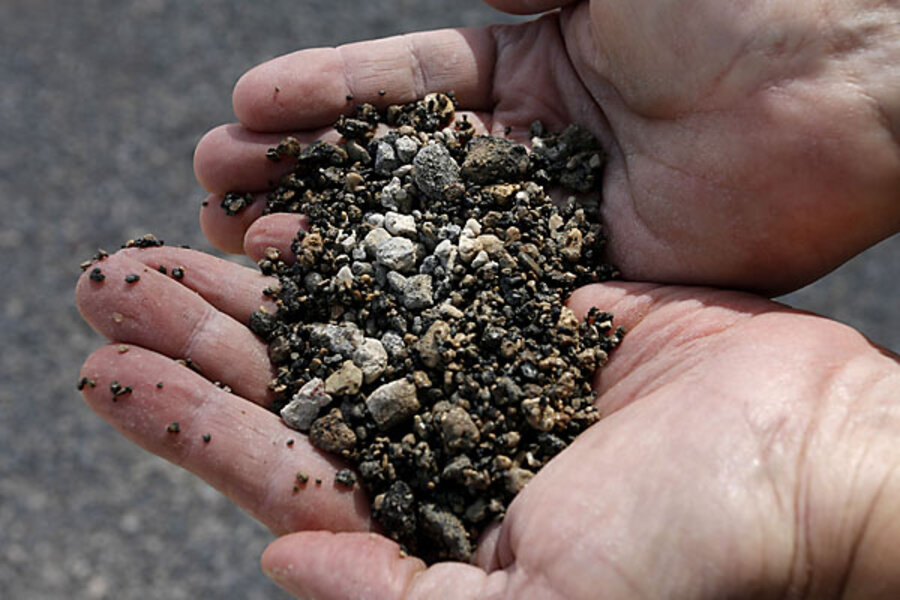Silver prices rising, and a shortage of 'the other white rock' looms
Loading...
The silver market has been on a tear, no doubt about it. The price of this shiny white rock has soared 50% in 2011, alone. There’s good reason for this huge move (Hint: His name is Ben Bernanke). But I want to tell you about a different white rock – one that’s also quite precious.
The rock is called phosphate.
There is no substitute for it. It is crucial to the world’s food supply, for which it serves as a fertilizer. And most of the world’s mines are in decline. Foreign Policy magazine recently called it “the gravest resource shortage you’ve never heard of.”
Demand for the rock is growing as demand for food rises. As I write, food prices are surging. Wheat is up 110% over the last 12 months. Corn is up 87%; soybeans, 59%; and sugar, 22%. Soaring food prices helped set off protests in Tunisia and Egypt, toppling regimes and threatening to spread similar uprisings to other poor countries in the region.
There is no quick remedy. Many of the trends that created today’s situation have been long in the making. The world population continues to grow. The amount of arable land per person continues to fall. Gains in crop yields have slowed. And more people around the world are eating a more calorie-rich diet. Prosperity in China, India, Brazil and other places have added millions of middle-class consumers eating more meat and processed foods. Plus, let’s not forget biofuels, which place energy and food in direct competition.
These happenings are no secret. I’ve written about them for the last couple of years. Now these things are on the front pages of newspapers and magazines. And – not surprisingly – the stocks of many agricultural firms have soared.
But there is still one story that has gotten little play from investors so far. It’s about a rock called phosphate, a key ingredient in making fertilizers. It is one of the three main nutrients for crops (nitrogen and potash being the other two).
It’s hard to overstate the importance of these fertilizers right now. About 40% of the world’s food supply depends directly on the application of these three nutrients. Yet the world still applies far less than the scientifically recommended rates.
Phosphate itself is important for root development and water efficiency. But most critically, like all fertilizers, it boosts crop yields. You get more per acre using it than not. In a world where arable land per person is falling and food consumption per capita is rising, crop yields are key.
Plus, consider the path of phosphate prices.
In the last food crisis of 2008, the price of phosphate rock soared to nearly $400/tonne. Then it crashed, like everything else. But it’s been making its way back up. Today, it’s about $150/tonne.
With all that’s happening right now, doesn’t it seem reasonable to think we’ll see another test of that peak? I think so.
The price of many commodities spiked in 2008, and then crashed in 2009, only to subsequently recover. Oil was over $140 per barrel, and dropped below $30, only to rebound strongly. As with oil, long-term demand and supply issues created phosphate’s spike too, and remain unresolved.
When I ask myself what’s changed from 2008, my answer is not much.
In fact, the oil analogy is not a bad one. As with oil, phosphate production is concentrated. Whereas some 75% of the world’s oil reserves are in the hands of OPEC, about 90% of the world’s phosphate is in the hands of just five countries: Morocco, China, South Africa, Jordan and the US.
As with oil, more and more countries need to import it, and it is getting hard to find big, low-cost supplies. The US is the largest consumer of phosphate and has long been an importer. Mosaic is one of the big producers down in Florida, which is the main source of phosphate in the US. But Mosaic has had trouble lately expanding that mine. They’ve actually had to stop mining from their Fort Meade facility over permitting issues. The US ought to import for many years to come. Latin America imports even more. And Asia imports even more still. India, for example, doesn’t have any phosphate and will become a major importer in years ahead.
Hence, the world begins its scramble to find more sources of phosphate. We’ve already seen a flurry of activity among the fertilizer companies last year. For example, Vale (the big Brazilian fertilizer and iron ore company) picked up phosphate mines and processing facilities from Bunge and Fosfertil.
Mosaic took a 60% stake in a Peruvian phosphate project, Bayovar, with Vale the other partner. Vale bought Bayovar, an undeveloped phosphate deposit, for $300 million in 2005. The 2010 deal valued it at $1.1 billion.
Still, based on what we know today, there is no significant new supply coming until at least 2014. All of the above will make phosphate a hot commodity in the next few years.
Therefore, buy phosphate.
Add/view comments on this post.
--------------------------
The Christian Science Monitor has assembled a diverse group of the best economy-related bloggers out there. Our guest bloggers are not employed or directed by the Monitor and the views expressed are the bloggers' own, as is responsibility for the content of their blogs. To contact us about a blogger, click here. To add or view a comment on a guest blog, please go to the blogger's own site by clicking on the link above.





